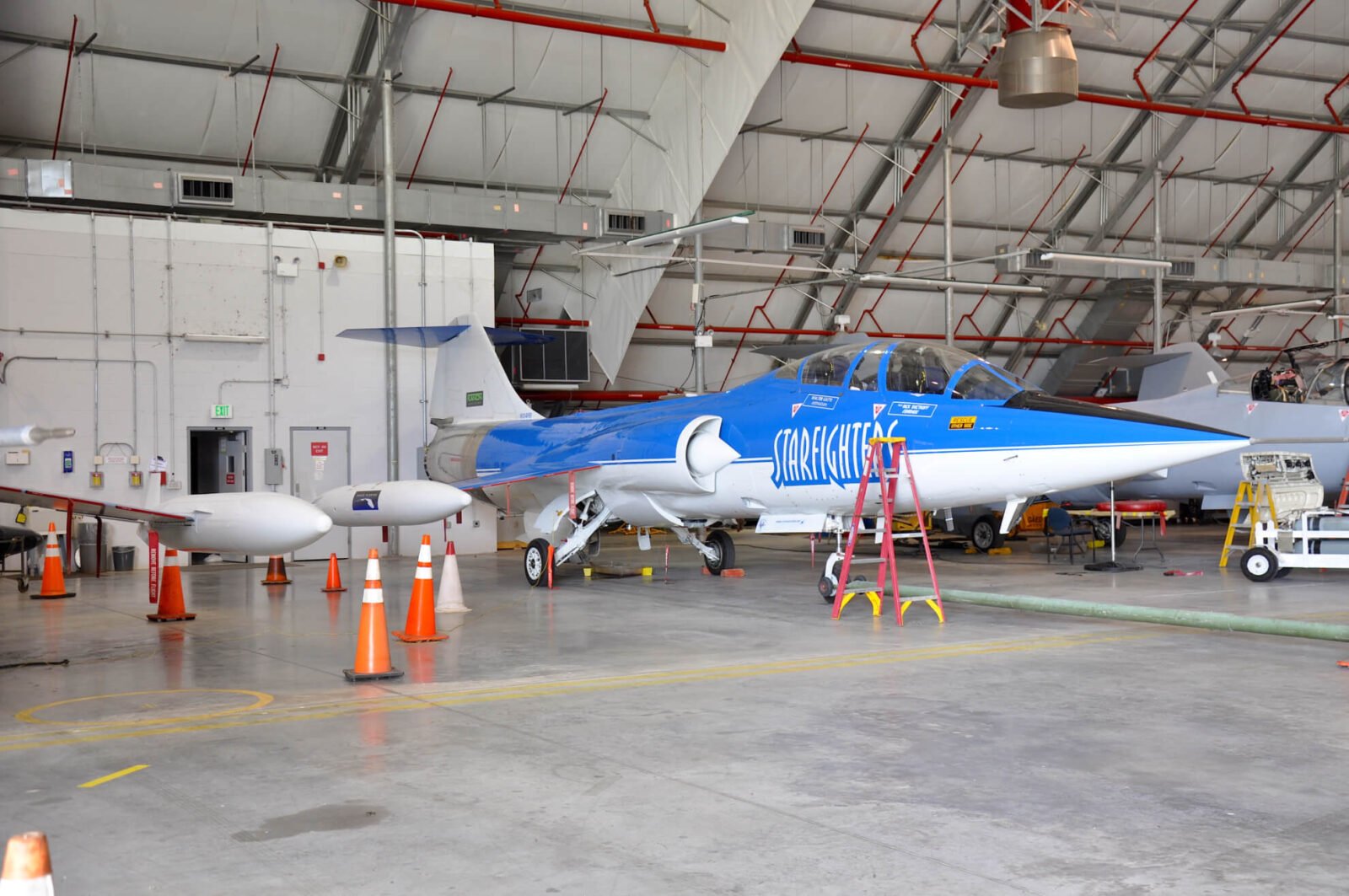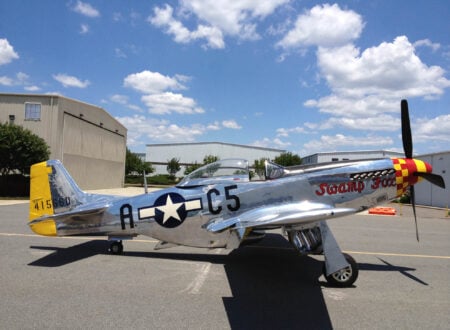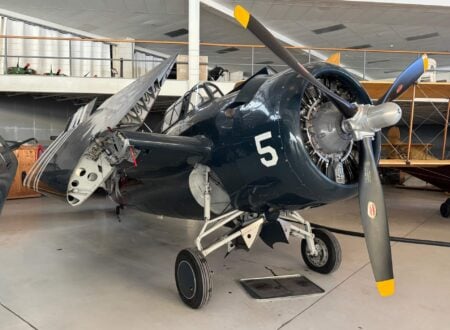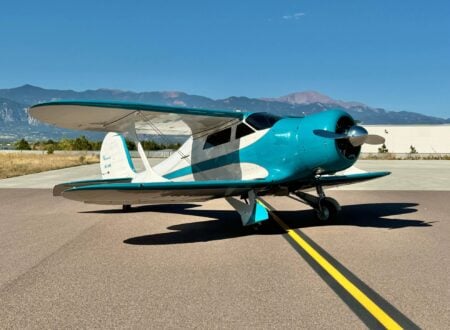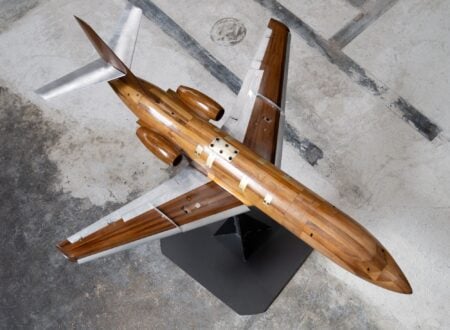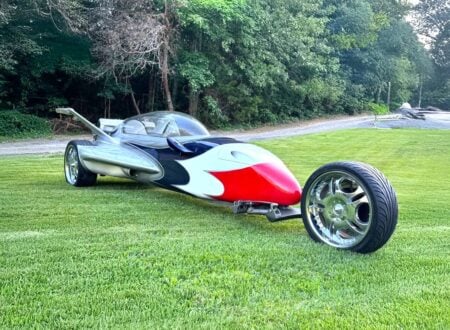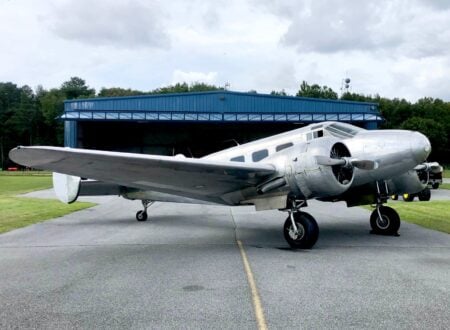This is a Lockheed F-104 Starfighter, it’s a supersonic fighter jet that was the first production aircraft to achieve Mach 2, and the first to reach an altitude of 100,000 ft after taking off under its own power.
The example you see here is currently being offered for sale. It was fitted with a replacement General Electric J-79-11B in 2017 and the airframe has a total of 3031.2 hours (TTSN). The bad news is that there is no price listed, and it’s currently disassembled for repainting and thus it’s being sold “as is, where is.”
Fast Facts – The Lockheed F-104 Starfighter
- The Lockheed F-104 Starfighter was a supersonic fighter jet developed in the 1950s, achieving Mach 2 and 100,000 ft altitude. Known for its sleek design and high speed, it was initially created as a lightweight, high-performance aircraft for U.S. Air Force pilots seeking improved climb and speed.
- The F-104’s development was driven by U.S. Air Force pilots’ need for a fast, lightweight aircraft. The design featured a sharp nose, minimal drag, and a T-tail configuration. Powered by a J79 turbojet, it reached speeds exceeding Mach 2 and became famous for its high speed and high altitude performance.
- After its initial limited use with the USAF, the F-104 was repurposed for tactical roles and later became a key NATO fighter jet in Europe during the Cold War. However, its design caused high accident rates due to issues like high landing speed, stall tendencies, and the T-tail configuration.
- The 1962 CF-104D Starfighter featured a 5,000-hour airframe, a 2017-installed J-79-11B engine, and modern avionics. Currently disassembled for repainting, it’s being sold “as is, where is” with full records available. The price is not listed, but inquiries can be made through Platinum Fighters.
A History Speedrun: The F-104 Starfighter
The Lockheed F-104 Starfighter was a supersonic interceptor and fighter aircraft developed by the United States in the 1950s. Designed by Clarence “Kelly” Johnson and his team at Lockheed’s Skunk Works, the F-104 became famous for its sleek, needle-like fuselage, high speed, and later for its controversial operational history.
Above Video: This documentary is over an hour long and tells the story of the Lockheed F-104 Starfighter in great detail, including its development and its latter life in Europe.
The early origins of the F-104 can be traced back to the Korean War, where U.S. pilots flying F-86 Sabres encountered agile Soviet MiG-15s. Many of these American pilots expressed a need for a smaller, simpler, and faster aircraft that could outperform contemporary jet fighters.
In 1951, Johnson met with U.S. Air Force (USAF) pilots in Korea to gather their input. They were all essentially on the same page, asking for a lightweight, high-performance fighter with superior speed and climb rate rather than a heavy, complex design like the North American F-100 Super Sabre or the Convair F-102 Delta Dagger.
Johnson returned to Skunk Works and proposed a radically different aircraft focused on pure speed and altitude performance, to give the fighter pilots what they wanted.
Lockheed’s proposal, designated CL-246, was a streamlined, minimalistic fighter with a small fuselage with a sharp nose and a long, pointed tail, trapezoidal wings, it was extremely thin and short, providing minimal drag at high speeds.
This design was powered by a single General Electric J79 turbojet for high thrust and performance that would see it surpass Mach 2, twice the speed of sound. As a result, it was given a T-tail configuration to improve aerodynamic efficiency at supersonic speeds.
Prototype Production Begins
Lockheed received a Letter of Contract (LoC) from the USAF in March 1953 for two prototypes under the designation XF-104. The Air Force was intrigued by the potential of the design to reach unprecedented speeds in a relatively small airframe.
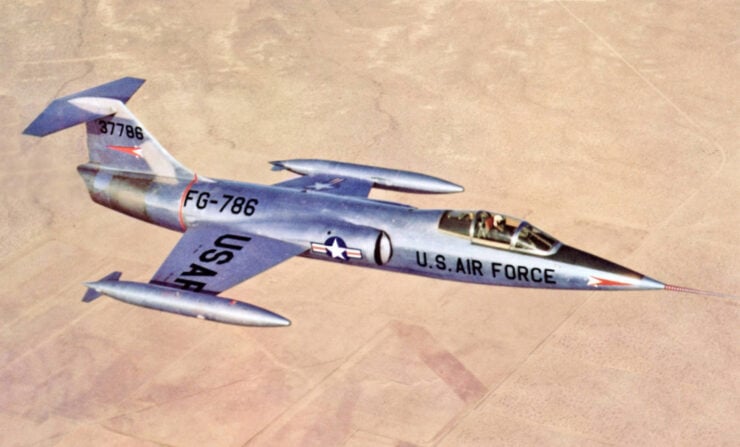

The first prototype, dubbed XF-104, was built reasonably quickly at Lockheed’s Burbank facility. It was powered by a non-afterburning J65 turbojet (due to delays with the J79).
The XF-104 made its maiden flight on February 7, 1954, with test pilot Tony LeVier at the controls at Edwards Air Force Base. The aircraft demonstrated excellent speed and climb performance, but the J65 engine was underpowered, and flight characteristics were demanding.
By 1955, Lockheed integrated the J79-GE-3 afterburning turbojet, allowing the F-104 to break Mach 2 in level flight. This engine combined with the aircraft’s excellent aerodynamics proved key to the F-104’s extreme high-speed performance.
A Limited Lifespan With The USAF
The F-104A/B models saw only limited frontline service with the USAF. Despite its record-breaking speed, it was not well-suited for dogfighting, lacked endurance, and it had significant maintenance challenges. The USAF would replace them with more all-round capable aircraft like the F-106 Delta Dart in air defense roles.
The F-104 was soon repurposed for tactical fighter roles, and Lockheed developed the F-104C, which saw action in Vietnam in the early 1960s. However, it was clear that the aircraft’s pure speed-focused design limited its versatility.


A Second Life In Europe
After its brief frontline service with the USAF in the late 1950s and early 1960s, the Lockheed F-104 Starfighter found a second life in Europe, where it became one of the most widely used NATO fighter jets during the Cold War.
This period of European adoption was marked by large-scale production, modifications to improve the design, and no small amount of controversy due to high accident rates.
These accident rates were caused by its short, thin wings, high landing speed (and high stall speed), and its T-tail configuration which could cause “deep stall” conditions – where the aircraft would become unrecoverable in certain high-angle-of-attack flight scenarios.
The Lockheed F-104 Starfighter Shown Here
The aircraft you see here is a 1962 CF-104D Starfighter with 3031.2 hours TTSN on the airframe, and a General Electric J-79-11B that was installed in 2017.
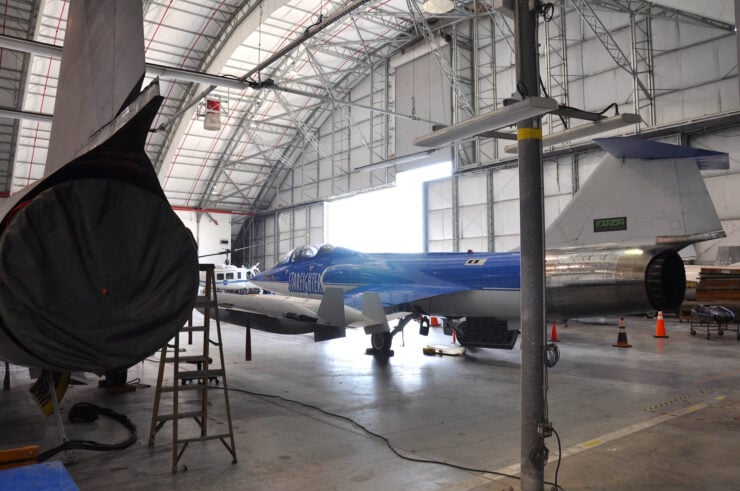

It’s been given a slew of more modern avionics as well as new wheels and brakes, and all logbooks and records are accounted for. The aircraft is listed as being disassembled for repainting and thus it’s being sold “as is, where is.”
If you’d like to read more about it or enquire about buying it you can visit the listing here on Platinum Fighters. At the time of writing there is no price listed.
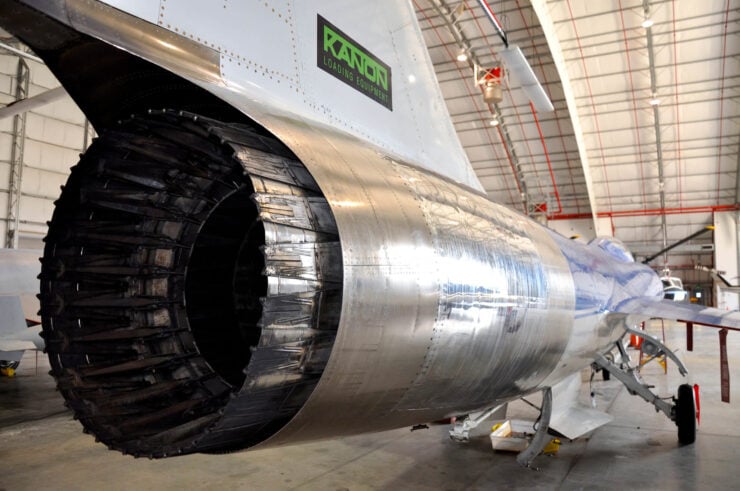
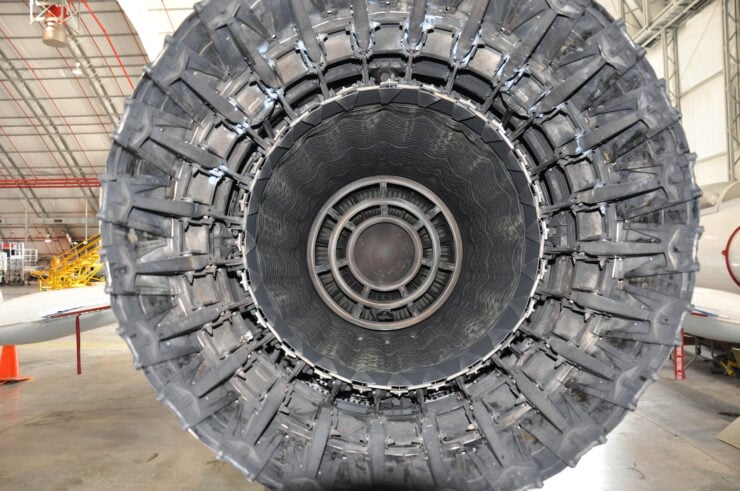
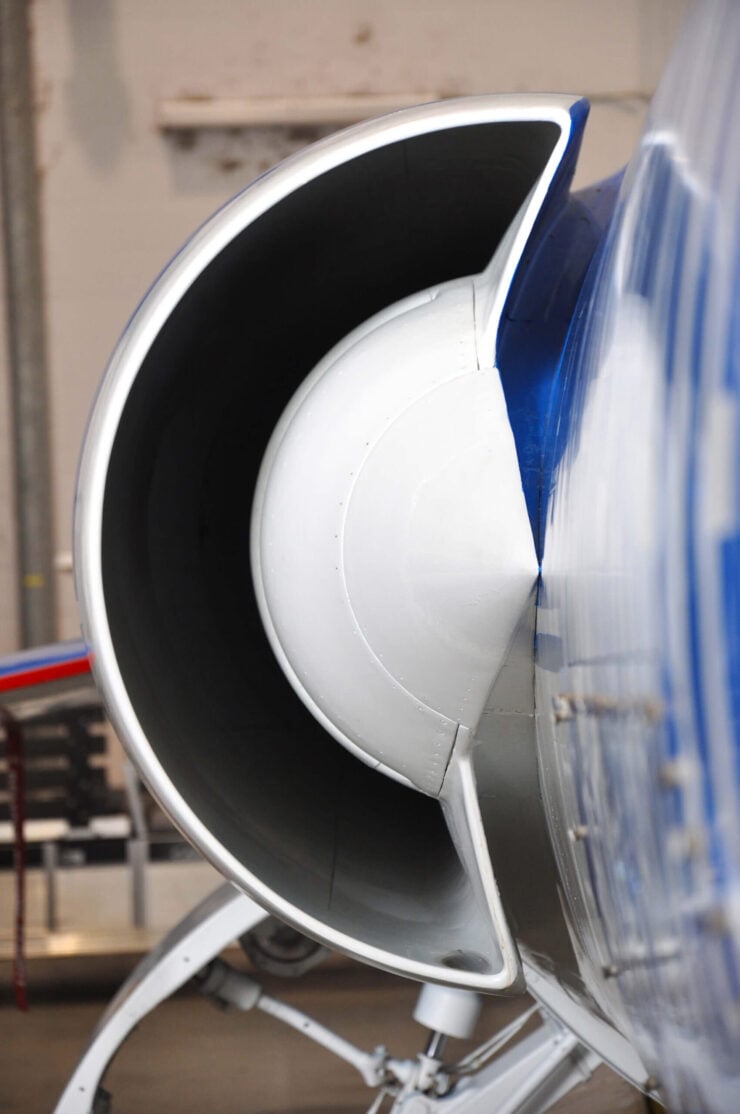
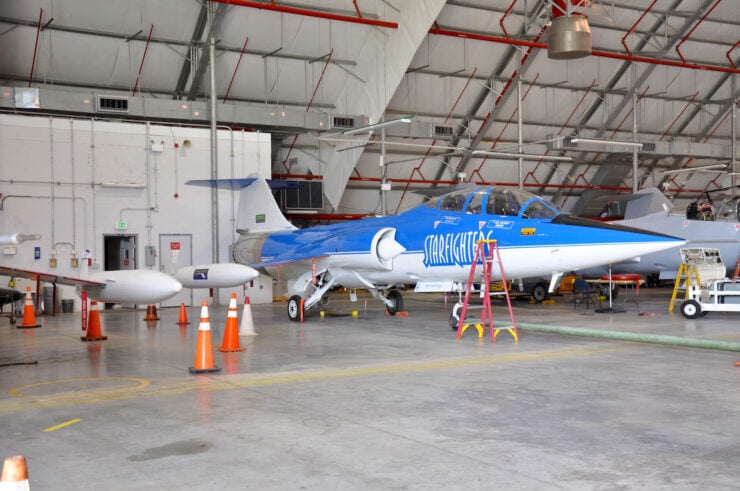
Images courtesy of Platinum Fighters

